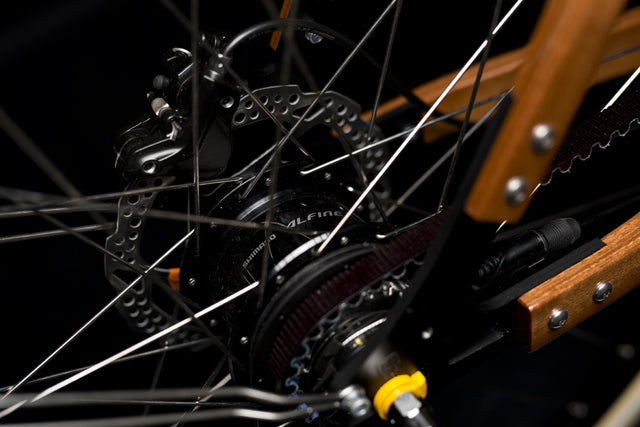History of wooden bicycles
So. Wooden bicycles. Are they really a novelty or are they something that has come back from the past?
IT ALL STARTED AROUND 1817 – WITH VELOCIPEDES & DANDY HORSES

The dandy-horse was a two-wheeled vehicle, with both wheels in-line, propelled by the rider pushing along the ground with the feet as in regular walking or running. The front wheel and handlebar assembly was hinged to allow steering.
Several manufacturers in France and England made their own dandy-horses during its brief popularity in the summer of 1819—most notably Denis Johnson of London, who used an elegantly curved wooden frame that allowed the use of larger wheels. Riders preferred to operate their vehicles on the smooth pavements instead of the rough roads, but their interactions with pedestrians caused many municipalities worldwide to enact laws prohibiting their use. Later designs avoided the initial drawback of this device when it had to be made to measure, manufactured to conform with the height and the stride of its rider. An example is Nicéphore Niépce's 1818 model with an adjustable saddle for his 'velocipede' built by Lagrange.
They're actually still around – The dandy horse has been adapted as a starter bicycle for children, and is variously called a balance bike or push bike.
DARK AGES FOR WOODEN BIKES, BUT PROSPERITY FOR BIKES OVERALL 1850S – 2000S
After the initial tryouts of the first bikes and intorduction of two-wheeled mode of transportations, small innovation after small invention brought the bicycles to mainstream. Here's actually a list of how that happened:
- 1795 – the first running machines, with no pedals, brakes or steering mechanisms
- 1817 – Drais adds steering mechanism
- 1865 – Michaux puts pedals on front wheel, adds primitive brakes and iron wheels – "bone shaker"
- 1877 – bicycle with large front wheel, pedals, rubber tires and pipe frame
- 1881 – large front wheel + ball bearrings
- 1884 – Safety bicycle – wheels are the same size, chain drive appears on rear wheel
- 1885 – Rover-type bicycle
- 1889 – modern bicycle with solid rubber tires
- 1893 – pneumatic tires are added
- 1898 – free wheel clutch is introduced
- 1900 – bicycle with free wheel clutch, mechanical gears and automatic brakes
During this time a few enthusiasts worked on wooden designs as well, but they were mostly one-offs and were unfit for mass production.
Since then, wooden bikes were manufactured off and on worldwide through the late 1940’s, but virtually none have been hollow nor were they engineered for performance.
MODERN TIMES 2007-
Modern technology was introduced to wooden bicycle frames by Renovo in 2007, 190 years after the first wooden bike. Nowadays, the majority of wooden bicycle producers are using computer controlled (CNC) router to precisely mill the frames in hollow halves, which are later bonded together. With state-of-the-art adhesives, finishes and manufacturing techniques we have produced high performance, lightweight wood bicycles so durable and beautiful they have become treasured heirlooms.
AND HERE WE ARE
Nowadays we've gotten to a point when people are looking for something more and it is the definition of why wooden bikes have come around again – the looks and aesthetics which are made possible with technological innovations in a lot of different products.
For example, coatings that are used on yachts, make it possible for wooden bikes to withstand any kind of weather.
Just choose yours! ;)


